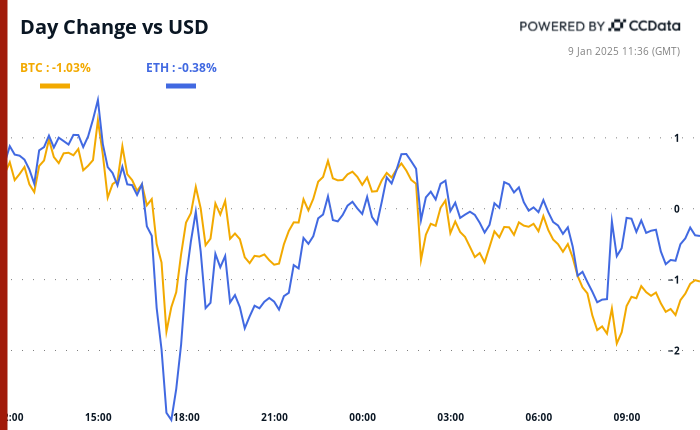The Performance Studies Working Group hosted an event entitled “Histories and Futures of the Metaverse with Michael Veal” on Oct. 31.
Hannah Kotler
Contributing Reporter

Yale News
The Performance Studies Working Group hosted a continuation of the Fall 2022 series on “Histories and Futures of the Metaverse with Michael Veal” — the first PSWG event in person since the COVID-19 pandemic began.
Veal — the Henry L. and Luce G. Moses Professor of Music, African American Studies and American Studies — specializes in ethnomusicology, or the study of music of different cultures. His Oct. 31 talk centered on his most recent book, “Wait Until Tomorrow: The Music of John Coltrane and Miles Davis Re-Assessed in the Digital Age,” which is set to be released in 2023.
The PSWG is a space where scholars and artists share their work with interdisciplinary students and faculty at Yale. PSWG is part of the Performance Studies Initiative at Yale. Each year, the PSWG focuses on a different theme. Curator Andie Berry and Tavia Nyong’o, the faculty convener of PSWG this semester, chose the theme of “metaverse” for the Fall 2022 series.
“We were inspired to investigate this theme because of Mark Zuckerberg’s rebranding of Facebook as Meta, a ‘social metaverse company,’” said Berry. “[Taking] the huge strides in virtual reality and augmented reality technologies, and a newfound mainstream interest in digital and virtual possibilities as an aftereffect of the pandemic lockdowns … as points of inspiration, we wanted to spend some time thinking about how technology is changing performance and how it is already entangled in performance.”
Veal, who jokingly characterized his work as “a work of music, history, music theory, disguised as a work of science fiction,” began his talk with two examples of distortion.
First, he discusses John Coltrane’s free meter music as a deviation from the traditional jazz. Second, he introduced Miles Davis’ quintet in the late 1960s, known as the “lost quintet,” as they never produced a formal studio recording. As a result, all existing recordings are unofficial tapes with low fidelity sound quality. Veal played extracts from John Coltrane and Charlie Parker’s unofficial recordings as examples of distorted sound.
In order to understand and analyze this disfigured music, whether due to low fidelity sound or free meter, Veal professed the need for a new language. Veal explained that there are two ways to create this new artistic language: from the inside and from the outside.
“In other words, you can work according to the established rules of that particular artistic practice,” explained Veal. “Or, you can step outside and borrow the rules of a different artistic medium and music work, according to the rules of literature, or poetry, or painting, or sculpture, or film, etc.”
To illustrate the application of other mediums to music, Veal displayed various examples of deconstructive architecture by well-known postmodern architects such as Richard Roth and Pietro Belluschi The audience observed the transformation from modernist, rectangular, rule-obeying architecture to experimental architecture intentionally “imbued with a sense of transformation or motion.”
To relate the discussion of music to modern technology, Veal points out that the bloom in music technology in the 1960s, from filters and equalizers to multitrack recorders, was the direct result of trickle-down military technology.
Further, modern technology — namely the internet — increases the accessibility of archival VHS tapes and recordings previously unavailable to the average researcher and enabled the rediscovery of vernacular forms of film and photography.
“There are archives that we can have access to that only exist online, things that we never would have had access to in the analog world,” Veal said. “The internet, the metaverse, becomes an archive of materials. Access to a bounty of new materials in turn furnishes new interpretations and analysis.”
The discovery of Miles Davis’ quintet recordings prompted Veal’s interpretation of late 1960s music as “the musicians’ way of using musical sound to evoke this new reality of humans being able to escape gravity” in reaction to the concurrent Space Age, specifically the Apollo 11 moon landing.
“It’s always interesting when you have people looking at the intersection of seemingly different fields,” said Gabriel Marous ’26, who attended the event. “I don’t know if I necessarily agree with all the points or logic, but the idea that bringing together seemingly different things such as jazz and photography can be productive is useful in the generation of any art, and my own art.”
Following his lecture, when asked whether technology popularized certain types of low-quality music, Veal responded that different types of music simply play different roles in society, and launched into a discussion approving the deconstruction of an elitist view of art.
“Art can be created in people’s basements,” said Veal, “It can be created anywhere, you know. It’s just a question of how we flip the switch of perception, to engage with it as art… art is just a stepping stone for an aesthetic experience of the entire world.”
The PSWG will host its next talk on Nov. 14 in Humanities Quadrangle Room 136.
Read More: news.google.com









 Bitcoin
Bitcoin  Ethereum
Ethereum  Tether
Tether  XRP
XRP  Solana
Solana  Dogecoin
Dogecoin  USDC
USDC  Cardano
Cardano  Lido Staked Ether
Lido Staked Ether  TRON
TRON  Avalanche
Avalanche  Wrapped stETH
Wrapped stETH  Sui
Sui  Toncoin
Toncoin  Chainlink
Chainlink  Shiba Inu
Shiba Inu  Wrapped Bitcoin
Wrapped Bitcoin  Stellar
Stellar  Hedera
Hedera  Polkadot
Polkadot  WETH
WETH  LEO Token
LEO Token  Bitcoin Cash
Bitcoin Cash  Litecoin
Litecoin  Uniswap
Uniswap  Pepe
Pepe  Hyperliquid
Hyperliquid  Wrapped eETH
Wrapped eETH  Ethena USDe
Ethena USDe  NEAR Protocol
NEAR Protocol  USDS
USDS  Internet Computer
Internet Computer  Aptos
Aptos  Aave
Aave  Mantle
Mantle  POL (ex-MATIC)
POL (ex-MATIC)  Cronos
Cronos  Ethereum Classic
Ethereum Classic  Render
Render  Bittensor
Bittensor  Monero
Monero  MANTRA
MANTRA  Tokenize Xchange
Tokenize Xchange  Dai
Dai  Artificial Superintelligence Alliance
Artificial Superintelligence Alliance  Arbitrum
Arbitrum  Virtuals Protocol
Virtuals Protocol